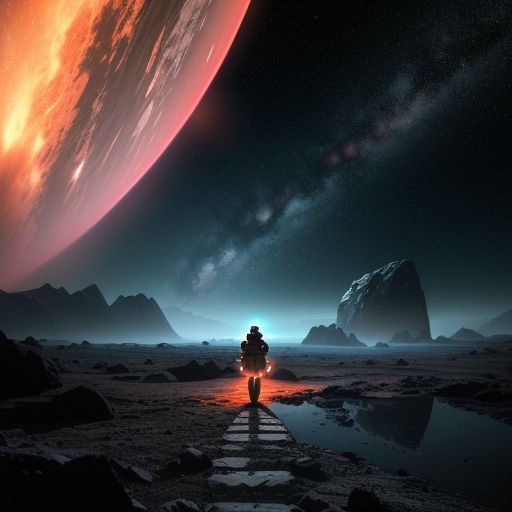Why Close Encounters Of The Third Kind 1977 Still Mystifies Fans
Exploring the Timeless Appeal of the Alien Encounter in Close Encounters of the Third Kind
Few films capture the awe and mystery of an alien encounter quite like Close Encounters of the Third Kind. Released in 1977 and directed by Steven Spielberg, this sci-fi masterpiece has fascinated audiences worldwide with its unique portrayal of humanity’s first contact with extraterrestrial life. It blends suspense, wonder, and emotional depth to create an experience that’s both thrilling and thought-provoking. Whether you’re a longtime fan or new to the genre, understanding what makes this movie a classic offers valuable insight into why it remains a milestone in alien encounter cinema.
What Makes Close Encounters of the Third Kind a Classic
Close Encounters of the Third Kind stands out as a quintessential alien encounter story for several reasons. Here’s why it continues to resonate:
Innovative Storytelling and Direction
Spielberg’s skillful direction introduced audiences to an alien narrative that avoided cliché monsters or invaders. Instead, the film focused on human curiosity and connection, treating the alien encounter with a sense of hope and mystery. This approach broke new ground in how extraterrestrial contact stories could be told.
Groundbreaking Visual and Sound Effects
The film’s visual effects, especially the climactic sequence showcasing the alien mothership’s majestic arrival, were revolutionary for its time. Coupled with the iconic five-tone musical communication, the sensory experience crafted an immersive atmosphere that still dazzles viewers today.
Memorable Characters and Emotional Depth
Close Encounters doesn’t limit itself to spectacle; it explores the psychological impact of alien encounters on ordinary people. Roy Neary’s obsessive quest after his contact reflects human vulnerability and the urge to seek meaning in the unknown.
Highlights and Strengths of the Movie’s Portrayal of Alien Encounter
The movie offers several key strengths that make the alien encounter feel authentic and compelling:
Focus on Communication and Curiosity
Instead of fear-driven conflict, the film centers on attempts to communicate and understand. This reframing invites audiences to imagine peaceful contact rather than hostility – a refreshing shift in a genre often dominated by invasion themes.
Use of Mystery and Ambiguity
Close Encounters masterfully employs suspense by gradually revealing the nature of the alien encounter, maintaining curiosity throughout the film. This pacing keeps viewers engaged and mirrors how real-world alien mysteries unfold—without easy explanations.
Scientific and Cultural Relevance
The film taps into existing theories and speculations about UFOs, government secrecy, and extraterrestrial life that continue to captivate people. Its influence even extends to popular culture’s collective imagination about alien encounters.
Memorable Sound Design and Score
Composer John Williams created the iconic musical motif used for alien communication, blending simple tones into a sophisticated language. This auditory element is key to the film’s enduring legacy as it conveys otherworldly intelligence without words.
Critiques and Limitations of Close Encounters
Even classics have imperfections. Some elements of Close Encounters of the Third Kind may challenge modern audiences or critics:
Pacing and Narrative Structure
The film’s deliberate pacing, while building suspense, might feel slow for those accustomed to faster storytelling. Certain subplots, such as Roy Neary’s family drama, can distract from the central alien encounter theme.
Character Development Gaps
Some viewers note that aside from the protagonist, secondary characters receive limited development, which could reduce emotional investment in their fates or motivations.
Ambiguity That May Frustrate
While mystery fuels the film, some elements remain unexplained, leaving unanswered questions that frustrate viewers seeking clear resolutions regarding the aliens’ nature or intentions.
The Impact of Close Encounters on Alien Encounter Narratives
This film’s influence on the alien encounter genre is profound and lasting:
– It inspired other filmmakers to portray extraterrestrials as complex entities rather than simple threats.
– It introduced themes of communication and emotional connection in alien stories.
– Its use of sound as a universal language expanded storytelling possibilities within sci-fi films.
– The movie reignited public interest in UFO phenomena during a pivotal cultural moment in the late 1970s.
Practical Insights for Understanding and Appreciating Alien Encounter Stories
Whether you’re a sci-fi fan, a film student, or a curious viewer, here are ways to deepen your appreciation for close encounter narratives using the lessons from this classic:
1. Approach alien encounters with an open mind, recognizing themes of communication, mystery, and human emotion.
2. Analyze how visual and sound design contribute to storytelling beyond dialogue and plot.
3. Reflect on cultural contexts that influence how alien encounters are imagined and portrayed.
4. Explore both strengths and limitations to engage critically with the genre.
Embracing the Wonder of Alien Encounter Through Classic Cinema
Close Encounters of the Third Kind invites us to embrace curiosity rather than fear, celebrating the possibility of contact with alien intelligence in a hopeful light. Its combination of innovative filmmaking, memorable sound, and emotional storytelling set a high standard for alien encounter stories that followed.














Post Comment